Childrens hearing
Children's Children's listening and speech development
Children's cognitive ability of sound is closely related to their language development. Parents can learn about their children's listening and language development stages from the following figure:
Language & Speech Development Of Normal Hearing Children:

● Pay attention to people's voice
● Jumps or blink to loud sound
● Smile when you talk

● Head will rotate in the direction of the sound
● Listen to music
● Express their emotions and needs with crying, cooing, facial expressions and body movements

● Turns towards voices or sounds
● Seem to like a musical toy
● Respond to the call from others
● Start babbling

● Listen when people talk
● Understand things like “no”, “bye bye”
● Like copying sounds
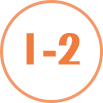
● Can distinguish object names and body parts
● Understand and follow simple instructions
● Listen to simple story and songs
● Usually understand nouns firstly and learn verbs later

● Understand and follow simple instructions
● Can differentiate common items and the name of the picture
● Find you when you call from another room
● Understand most of what you and teachers say
● Can answer simple question
● Like books, story-time and able to answer questions after being read to
Symtoms of Children Hearing Loss
Clinical studies consistently show that even minimal hearing losses would lead to significant negative impact on the children’s speech and language development. In addition, children with hearing loss often do not appear to understand what is being said and frequently require repetition during daily communications. They might sometimes be accused of "daydreaming," or "not paying attention". It is therefore important for parents to observe their children's behavior and look for signs and symptoms of possible hearing loss.
Following are the signs and symptoms that should make you suspect that your child has a hearing loss:

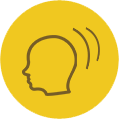
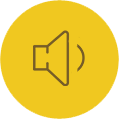

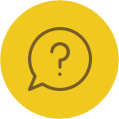
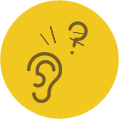
If more than two questions say “yes”, we suggest you make an appointment with our audiologists for a full audiological assessment and professional advices on rehabilitation.
Paediatric Hearing Assessment
Hearing screening helps to identify with hearing loss to avoid long-term and developmental impacts resulted by hearing impairment. We are concerned about infants’ hearing health and provide the following hearing screening and assessment services in our centres:
Our Paediatric Audiological Services provided :
Otoacoustic
(Otoacoustic
Emissions Test - OAE)
● A miniature earphone with microphone is placed in the ear. Sounds are played and the response is measured. It is a test for the outer hair cells’ function in the cochlea that can give information on the diagnosis of site of lesion in the auditory system.
Auditory Brainstem
(Auditory Brainstem
Response Test - ABR)
● A fully automated ABR system which detects the presence or absence of an auditory brainstem response in newborns and infants. In this test, sounds are played to the infant’s ear through ear domes. Electrodes are placed on the infant’s forehead, shoulder or nape to detect the brainstem responses.
The following two hearing test techniques are commonly used in neonatal hearing diagnosis:
Impedance Audiometry
(Impedance Audiometry)
● Test includes tympanometry and/or acoustic reflex measures, to assess the status of middle-ear system, such as eardrum.
Auditory Steady State Response – ASSR
(Auditory Steady State
Response - ASSR)
● Auditory Steady State Response is an objective test used for evaluation of hearing ability in children too young for traditional audiometric testing.
Phonak Paediatric Hearing
& Speech Centre
Phonak Paediatric Hearing & Speech Centre is the first private centre in Asia to receive the Phonak Certified Paediatric Center title, a certification that requires meeting stringent criteria and passing strict assessments conducted by professionals from Sonova Group.
To provide the hearing impaired person with the highest hearing quality possible, Phonak continuously sets new standards in our products and service procedures. We ensure that all hearing aid users & cochlear implant recipients are most appropriately fitted through various measurements.
Communication
A hearing loss, if go untreated, may result in speech defects, communication, learning and behavioral problems. In addition, children with hearing loss often do not appear to understand what is being said and frequently require repetition during daily communications. If your child has a hearing loss, you can do a lot to help and support them in daily life. For example, you can help your child understand and develop speech better by keeping a few basic communication rules in mind, such as: keep your face in view, speak clearly, avoid background noise, etc.